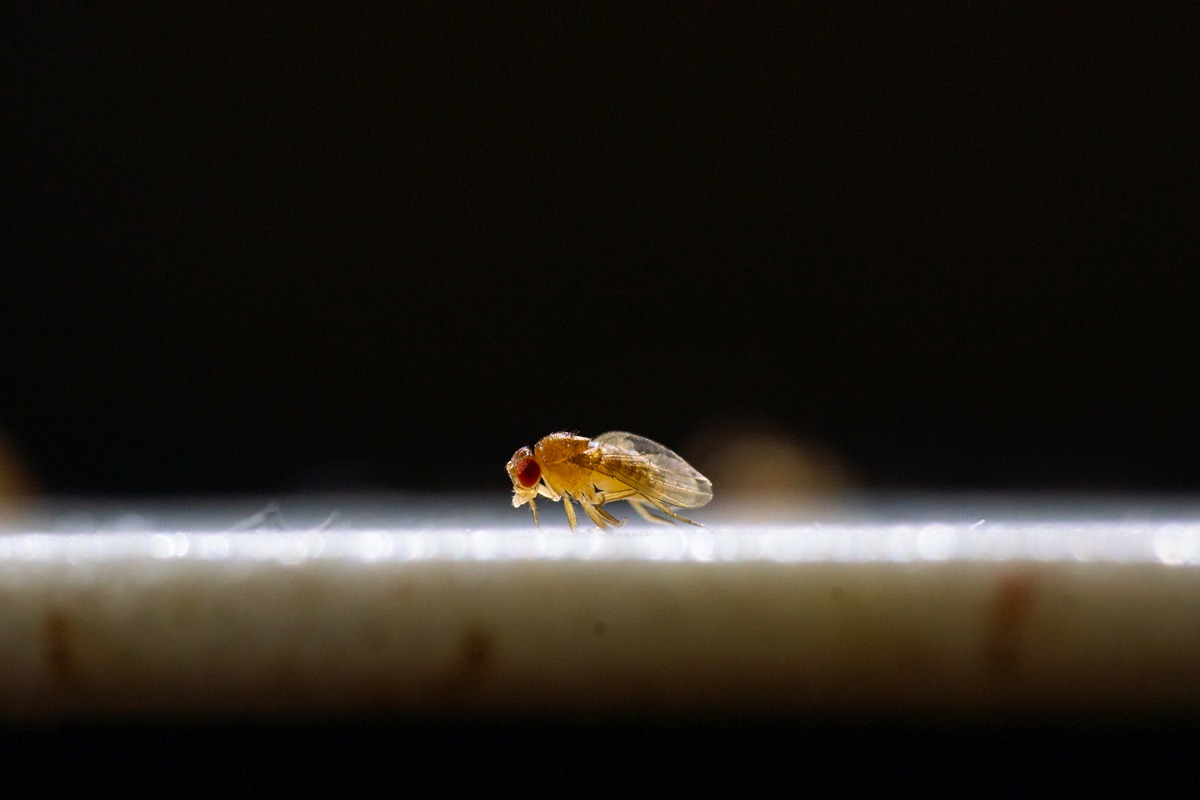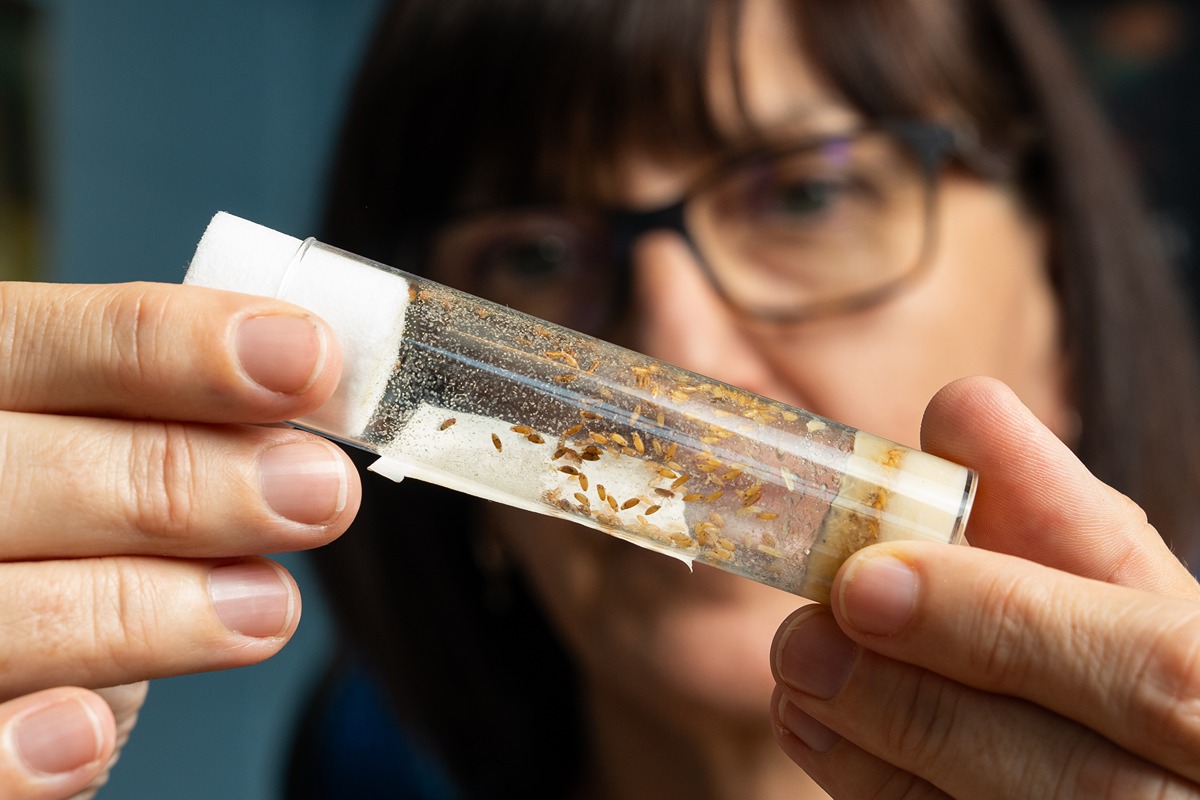Gene expression research brings hope to the delay and prevention of Alzheimer’s disease
Dementia, Parkinson’s and Alzheimer’s diseases slowly curtail the full, exciting lives of those inflicted and bring a premature grief to their loved ones. But scientists, including those at Purdue University, are optimistic about recent developments in understanding the diseases and learning how to delay and prevent them.
Hana Hall, research assistant professor in biochemistry, studies DNA damage and repair. Through a recent collaborative grant from the National Institutes of Health (NIH) awarded to Hall and Chris Rochet, director of the Purdue Institute for Integrative Neuroscience, they’ve been deciphering the broken pathways in neurons, or the nerve cells of the brain, associated with Alzheimer’s disease.
Unlike most of the human body’s cells, neurons do not divide. The number of nerve cells in an adult are established largely at birth. Without this opportunity for replacement, neurons are tasked with lasting a lifetime.
Hall said that in diseases like cancer, which is caused by cells dividing too much, it’s better for damaged cells to die. Alzheimer’s is a different story. “In the aging process, there is more damage and less efficient repair processes, which means that cells have to decide how to use their energy resources. Neurons would rather lose some of their function and put resources towards surviving because it’s better to have half-functioning neurons than dead neurons.”
When specific regions of DNA, called genes, are read and made into a single-stranded RNA code that can then be converted into proteins, opportunities for several mistakes emerge. Hall and her lab were the first to describe “R-loops” in aging neurons. These R-loop structures occur when RNA strands bond back to the DNA they were coded from due to a matching base pair set in each molecule. This keeps the RNA strands from traveling outside the nucleus—where the DNA is held—and being translated into proteins.
“R-loops are naturally occurring, and they sometimes have important regulatory functions; however, they always need to be removed eventually. Cells have mechanisms to either prevent formation of these structures or remove them,” Hall said. “But, with age or under age-related diseases, these mechanisms are not as efficient. So, these R-loops form more often, or they're more stable, and then they cause problems like DNA damage.”
A protein called “tau” may be behind some of the persistence of R-loops in aging. When properly formed and in the right concentration, tau works in the microtubules of a nerve cell, providing structure and assisting in the transport of molecules across the elongated tips of the star-shaped neurons. Under some age-related diseases, tau can become dysregulated and clump together in the cells.
Like a clogged machine where some of the gears cannot turn freely, a cell’s organelles may similarly be inhibited by the aggregated protein. When tau clumps shift things around in the cells, for instance, the specialized proteins and enzymes that would remove or prevent R-loops may become inaccessible.
Hall studies the subsequent build-up of R-loops in aging neurons of fruit flies and mice cultures. While traditional gene expression work focuses on the code of DNA, the Hall lab is also interested in the structure of those genes. The longer a gene is, for example, the more likely it is to form excessive R-loops. Neuronal genes are typically longer and have more complicated regulation than other body cells, making those physical properties especially integral to studying aging.
The next step for Hall and her lab is to find ways to delay the aging and Alzheimer’s symptoms in the fruit flies. They’re currently experimenting with ways to prevent R-loop accumulation by increasing the viability of cellular mechanisms that break down R-loops and even attempting epigenetic engineering—changing the chemical molecules tied to DNA and RNA that provide regulatory instructions for the code and gene expression.
Once their effect is better understood in model organisms in the lab, Hall looks forward to their successful therapies helping humans with Alzheimer’s. Alzheimer’s disease currently has no cure, and one path ahead may be to identify ways that prevent or postpone its onset. Hall believes a five-year delay would significantly improve the quality of life for those diagnosed.
Age-related diseases are a major concern with globally aging populations, but certain lifestyle choices can help reduce an individual’s risk. Hall says that exercise and connecting with others in a community are both important to preventing age-related illnesses. Her recommendation is to “look for something that makes you happy and take care of your body and mind for yourself.” Hall has recently found her self-care in becoming a yoga instructor.
Though their research on Alzheimer’s is just beginning, Hall is “hopeful that we’re making a positive and productive contribution to people’s health. I feel humbled to be part of the Alzheimer’s research community and to receive funding from NIH, which ultimately comes from taxpayers. I feel a great responsibility to do my work as best I can.”
This research is a part of Purdue’s presidential One Health initiative, which involves research at the intersection of human, animal and plant health and well-being.









